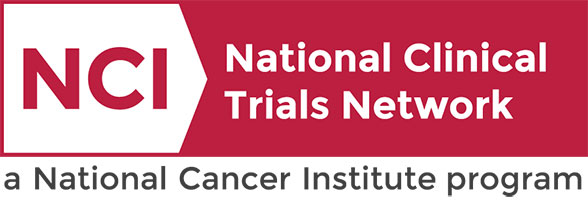Patient Search
 |
 |
|
KaCrole Higgins was diagnosed with breast cancer in 2020. “In May 2020, I found a lump in my breast. I cried. By June, it was diagnosed as breast cancer, triple positive, stage 1A. While getting this cancer diagnosis was devastating, it also became an opportunity. Suddenly, the cancer gave me clarity. It gave me clarity about what was important, what was good in my life, what was toxic in my life, and what I needed to do.” Click below to read more of KaCrole’s story |
If Landon Ryan had been diagnosed with bilateral retinoblastoma 10, 20 or 30 years ago, she might not be here today with nearly perfect vision.Thanks to recent improvements in the treatment for this rare form of cancer that almost exclusively affects children under the age of 5, the diagnosis had the power to change Landon’s life when she was 11 months old, but not to take it — or her eyesight. Click below to learn more about Landon and her story. https://momentum.vicc.org/2022/04/brighter-outlook/ |
Neoadjuvant Darolutamide Alone or in Combination With Standard Therapy for Stage II-IIIA, AR+, TNBC
Breast
Breast
This phase II trial compares the effect of adding darolutamide to standard therapy versus standard therapy alone before surgery for the treatment of patients with stage II-IIIA androgen receptor positive triple-negative breast carcinoma. Standard therapy before surgery for triple-negative breast cancer typically consists of a combination of chemotherapy and immunotherapy drugs. Chemotherapy drugs, such as carboplatin, paclitaxel, doxorubicin and cyclophosphamide, work in different ways to stop the growth of tumor cells, either by killing the cells, by stopping them from dividing, or by stopping them from spreading. Immunotherapy with monoclonal antibodies, such as pembrolizumab, may help the body's immune system attack the cancer, and may interfere with the ability of tumor cells to grow and spread. Darolutamide is in a class of medications called androgen receptor inhibitors. It works by blocking the effects of androgen (a male reproductive hormone) to stop the growth and spread of tumor cells. Giving darolutamide in combination with standard therapy before surgery may make the tumor smaller and may reduce the amount of normal tissue that needs to be removed.
Breast
II
Abramson, Vandana
NCT07016399
VICC-VCBRE23490
DCIS: RECAST Trial Ductal Carcinoma In Situ: Re-Evaluating Conditions for Active Surveillance Suitability as Treatment
Breast
Breast
The goal of this trial is to see if active surveillance monitoring and hormonal therapy in patients diagnosed with ductal cell carcinoma in situ (DCIS), an early stage of breast cancer, can be an effective management of the disease.
Participants will be asked to receive control hormonal therapy or an investigational hormonal therapy treatment. Participants will be asked to return for evaluation with MRI at three months and six months. Depending on the evaluation participants will have the option to continue on the treatment. If the evaluation suggests surgery is recommended, the participant will discontinue the study treatment and will undergo surgery. In addition to the treatment and MRI evaluation, participants will be asked to provide blood sample to understand their immune status, provide saliva sample for genetic testing, provide the study with a portion of the tissue or slides generated from tissue removed during surgery performed as part of their standard of care.
Participants will be asked to receive control hormonal therapy or an investigational hormonal therapy treatment. Participants will be asked to return for evaluation with MRI at three months and six months. Depending on the evaluation participants will have the option to continue on the treatment. If the evaluation suggests surgery is recommended, the participant will discontinue the study treatment and will undergo surgery. In addition to the treatment and MRI evaluation, participants will be asked to provide blood sample to understand their immune status, provide saliva sample for genetic testing, provide the study with a portion of the tissue or slides generated from tissue removed during surgery performed as part of their standard of care.
Breast
II
Meszoely, Ingrid
NCT06075953
VICC-DTBRE23082
Circulating Tumor DNA to Guide Changes in Standard of Care Chemotherapy
Breast
Breast
This phase II trial tests how well evaluating circulating tumor deoxyribonucleic acid (ctDNA) works to guide therapy-change decisions in treating patients with triple-negative breast cancer (TNBC) that has spread from where it first started (primary site) to other places in the body (metastatic). This study wants to learn if small pieces of DNA associated with a tumor (called circulating tumor DNA, or ctDNA) can be detected in investigational blood tests during the course of standard chemotherapy treatment for breast cancer, and whether information from such investigational ctDNA blood testing could possibly be used as an early indication of chemotherapy treatment failure. It is hoped that additional information from investigational blood testing for ctDNA could help doctors to switch more quickly from a standard chemotherapy treatment that typically has significant side effects and which may not be working, to a different standard treatment regimen against TNBC, called sacituzumab govitecan. Sacituzumab govitecan is a monoclonal antibody, called hRS7, linked to a chemotherapy drug, called irinotecan. hRS7 is a form of targeted therapy because it attaches to specific molecules (receptors) on the surface of cancer cells, known as TROP2 receptors, and delivers irinotecan to kill them. Studying ctDNA may assist doctors to change therapy earlier if needed, and may improve health outcomes in patients with metastatic TNBC.
Breast
II
Abramson, Vandana
NCT05770531
VICCBRE2257
Gene Signatures to Guide HR+MBC Therapy in a Diverse Cohort
Breast
Breast
This is an open-label, multicenter, two-arm Phase II clinical trial that will evaluate the impact of 2nd line chemotherapy (i.e. capecitabine) on survival in patients with non-Luminal A hormone receptor-positive (HR+) metastatic breast cancer (MBC)
Breast
II
Reid, Sonya
NCT05693766
VICCBRE2256
Evaluation of Talazoparib, a PARP Inhibitor, in Patients With Somatic BRCA Mutant Metastatic Breast Cancer: Genotyping Based Clinical Trial
Breast
Breast
This research is to evaluate the effectiveness of Talazoparib as a potential treatment for metastatic breast cancer with a BRCA 1 or BRCA 2 mutation.
Breast
II
Abramson, Vandana
NCT03990896
VICCBRE2265
Targeted Therapy Directed by Genetic Testing in Treating Patients With Locally Advanced or Advanced Solid Tumors, The ComboMATCH Screening Trial
Multiple Cancer Types
This ComboMATCH patient screening trial is the gateway to a coordinated set of clinical trials to study cancer treatment directed by genetic testing. Patients with solid tumors that have spread to nearby tissue or lymph nodes (locally advanced) or have spread to other places in the body (advanced) and have progressed on at least one line of standard systemic therapy or have no standard treatment that has been shown to prolong overall survival may be candidates for these trials. Genetic tests look at the unique genetic material (genes) of patients' tumor cells. Patients with some genetic changes or abnormalities (mutations) may benefit from treatment that targets that particular genetic mutation. ComboMATCH is designed to match patients to a treatment that may work to control their tumor and may help doctors plan better treatment for patients with locally advanced or advanced solid tumors.
Breast,
Gastrointestinal,
Gynecologic,
Head/Neck,
Lung,
Melanoma,
Neuro-Oncology,
Sarcoma,
Urologic
II
Choe, Jennifer
NCT05564377
VICC-NTMDT23238
(Z)-Endoxifen for the Treatment of Premenopausal Women With ER+/HER2- Breast Cancer
Breast
Breast
This open-label research study is studying (Z)-endoxifen as a possible treatment for pre-menopausal women with ER+/HER2- breast cancer. (Z)-endoxifen belongs to a group of drugs called selective estrogen receptor modulators or "SERM", which help block estrogen from attaching to cancer cells. This study has two parts: a pharmacokinetic part and a treatment part.
The PK part (how the body processes the drug) will enroll about 18 participants. All participants will take (Z)-endoxifen capsules daily. Twelve participants will be randomly assigned (50/50 chance) to take (Z)-endoxifen alone or (Z)-endoxifen with a monthly injection of goserelin a drug that temporarily stops the ovaries from making estrogen. This part will help determine the best dose of (Z)-endoxifen by measuring the drug levels in the blood and how long the body takes to remove it.
The Treatment Cohort has been simplified to a single study arm (Z)-endoxifen + goserelin. Up to 20 participants will be enrolled that have a baseline Ki-67 10% and 45 participants will be enrolled that have a baseline Ki-67\>10%.
A key goal of the study is to see if (Z)-endoxifen can slow down or stop tumor growth as measured by a reduction in Ki-67 levels. Tumor tissue samples will be taken by breast biopsy after about 4 weeks of treatment to check levels of this biomarker. If the tumor shows signs of response, participants can continue treatment for up to 24 weeks or until they have surgery.
Study participation is up to 6 months (24 weeks of treatment) followed by surgery and a one-month follow up visit.
The PK part (how the body processes the drug) will enroll about 18 participants. All participants will take (Z)-endoxifen capsules daily. Twelve participants will be randomly assigned (50/50 chance) to take (Z)-endoxifen alone or (Z)-endoxifen with a monthly injection of goserelin a drug that temporarily stops the ovaries from making estrogen. This part will help determine the best dose of (Z)-endoxifen by measuring the drug levels in the blood and how long the body takes to remove it.
The Treatment Cohort has been simplified to a single study arm (Z)-endoxifen + goserelin. Up to 20 participants will be enrolled that have a baseline Ki-67 10% and 45 participants will be enrolled that have a baseline Ki-67\>10%.
A key goal of the study is to see if (Z)-endoxifen can slow down or stop tumor growth as measured by a reduction in Ki-67 levels. Tumor tissue samples will be taken by breast biopsy after about 4 weeks of treatment to check levels of this biomarker. If the tumor shows signs of response, participants can continue treatment for up to 24 weeks or until they have surgery.
Study participation is up to 6 months (24 weeks of treatment) followed by surgery and a one-month follow up visit.
Breast
II
Abramson, Vandana
NCT05607004
VICCBRE22108
A Single Arm Phase II Study of ADjuvant Endocrine Therapy, Pertuzumab, and Trastuzumab for Patients With Anatomic Stage I Hormone Receptor-positive, HER2-positive Breast Cancer
Breast
Breast
This research study is studying a combination of HER2-directed therapies (trastuzumab and pertuzumab) and hormonal therapy as a treatment after surgery for hormone receptor positive breast cancer.
The study drugs involved in this study are:
* A combination of trastuzumab and pertuzumab given as an injection under the skin (PHESGO)
* Hormonal (endocrine) Treatment
The study drugs involved in this study are:
* A combination of trastuzumab and pertuzumab given as an injection under the skin (PHESGO)
* Hormonal (endocrine) Treatment
Breast
II
Abramson, Vandana
NCT04569747
VICCBRE2243
Atezolizumab + Sacituzumab Govitecan to Prevent Recurrence in TNBC (ASPRIA)
Breast
Breast
The purpose of this study is to determine if a combination of two drugs sacituzumab govitecan and atezolizumab works as a treatment for residual cancer in the breast or lymph nodes and have circulating tumor DNA in the blood.
This research study involves the following investigational drugs:
* Sacituzumab govitecan
* Atezolizumab
This research study involves the following investigational drugs:
* Sacituzumab govitecan
* Atezolizumab
Breast
II
Abramson, Vandana
NCT04434040
VICCBRE2056
Avelumab With Binimetinib, Sacituzumab Govitecan, or Liposomal Doxorubicin in Treating Stage IV or Unresectable, Recurrent Triple Negative Breast Cancer
Breast
Breast
This phase II trial studies how well the combination of avelumab with liposomal doxorubicin with or without binimetinib, or the combination of avelumab with sacituzumab govitecan works in treating patients with triple negative breast cancer that is stage IV or is not able to be removed by surgery (unresectable) and has come back (recurrent). Immunotherapy with checkpoint inhibitors like avelumab require activation of the patient's immune system.
This trial includes a two week induction or lead-in of medications that can stimulate the immune system. It is our hope that this induction will improve the response to immunotherapy with avelumab. One treatment, sacituzumab Govitecan, is a monoclonal antibody called sacituzumab linked to a chemotherapy drug called SN-38. Sacituzumab govitecan is a form of targeted therapy because it attaches to specific molecules (receptors) on the surface of tumor cells, known as Tumor-associated calcium signal transducer 2 (TROP2) receptors, and delivers SN-38 to kill them. Another treatment, liposomal doxorubicin, is a form of the anticancer drug doxorubicin that is contained in very tiny, fat-like particles. It may have fewer side effects and work better than doxorubicin, and may enhance factors associated with immune response. The third medication is called binimetinib, which may stop the growth of tumor cells by blocking some of the enzymes needed for cell growth, and may help activate the immune system. It is not yet known whether giving avelumab in combination with liposomal doxorubicin with or without binimetinib, or the combination of avelumab with sacituzumab govitecan will work better in treating patients with triple negative breast cancer.
This trial includes a two week induction or lead-in of medications that can stimulate the immune system. It is our hope that this induction will improve the response to immunotherapy with avelumab. One treatment, sacituzumab Govitecan, is a monoclonal antibody called sacituzumab linked to a chemotherapy drug called SN-38. Sacituzumab govitecan is a form of targeted therapy because it attaches to specific molecules (receptors) on the surface of tumor cells, known as Tumor-associated calcium signal transducer 2 (TROP2) receptors, and delivers SN-38 to kill them. Another treatment, liposomal doxorubicin, is a form of the anticancer drug doxorubicin that is contained in very tiny, fat-like particles. It may have fewer side effects and work better than doxorubicin, and may enhance factors associated with immune response. The third medication is called binimetinib, which may stop the growth of tumor cells by blocking some of the enzymes needed for cell growth, and may help activate the immune system. It is not yet known whether giving avelumab in combination with liposomal doxorubicin with or without binimetinib, or the combination of avelumab with sacituzumab govitecan will work better in treating patients with triple negative breast cancer.
Breast
II
Abramson, Vandana
NCT03971409
VICCBRE1987


